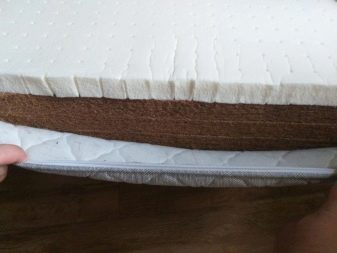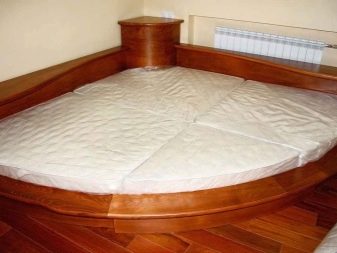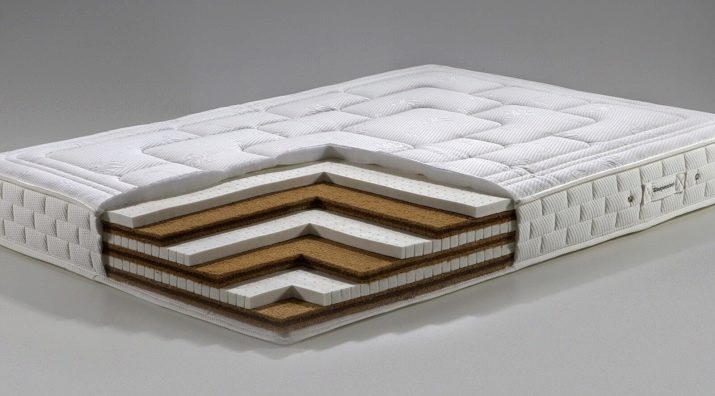Mattress sizes

Whether the mattress is the right size depends on how comfortable a person will sleep on it. The standard dimensions of this sleeping accessory for adults are often chosen with a margin - at least 2 m long.

Standard sizes of mattresses for children and teenagers
Before getting acquainted with the assortment, a person who for the first time chooses a new mattress to replace the old one, inherited from their parents or taken by ad without overpayments to stores, will remember how tall and complex he is.
A certain margin in length, width and thickness is necessary in order to sleep on such a product always at least with relative comfort.
Having specified the initial data, the user will prefer exactly the model that will serve him for at least ten years without any problems with the convenience of sleep and without harm to human health.
Children's models start from a length of 140 cm. They are designed for babies or short adolescents, whose genetics and living conditions will not allow them to grow up to the mark of tall adults. These are standard sizes 160 by 80, 70x160, 80x180, 60x170, 90x180, 120x60 cm. As you can see from the assortment, a mattress up to 180 cm long is the best choice for children and adolescents.


For boys and girls who have already crossed the upper age limit for active growth, manufacturers advise focusing on a length of 190 cm. These are standard sizes 80x200, 80x190, 90x200, 100x200, 70x190, 110x200 cm. In this case, the width of a single product is determined by the complexion of an adult. If you want more comfort, then preference is given to one and a half mattresses.

Dimensions of one and a half mattresses
For an adult, mattresses 130x190, 130x200 cm, etc. are suitable, for example. The width here starts from 120 cm. Any mattress is at least 20 cm high, especially when it is made of natural and synthetic materials using springless technology. The fact is that over time, such a mattress should not be squeezed under the weight of the user's body.
The choice of springs - with springs tied into a frame or an independent spring base - is based on the same criteria for optimal thickness.
The task of any mattress is not to push under the body of a person to the plywood board (flooring) of the bed or sofa, which serves as a support (platform) for this sleeping accessory. "One and a half sleeping bag" for children and adolescents in width does not differ much from a similar product used by adult users.

Parameters of mattresses for a double bed
"Double beds" are mainly presented in the following sizes: 160x200, 180x200, 200x200, 170x200, 175x200, 195x200 cm. In all cases, the step of changing the length and width to either side is about 5 cm, unless a special order is made to the manufacturer or private (small) factory, for example: a batch of coconut coir and latex mattresses under the beds of a VIP hotel or the same motel, with a sleeping area of 200 * 177 cm.


Sizes below those indicated in this list are not recommended to be taken as double models. If, for example, a young couple has romanticism over the edge for many years, and they always sleep embracing, almost "on top of each other," then they may want to choose a size approaching one and a half. For everyone else, the "king size" 2 * 2 m or 210 * 200 cm will be optimal and very comfortable. In the latter case, it is really better not to save money: a successfully completed purchase will delight you for 20 years or more. You will not want to change this product, even when romantic relationships change to ordinary ones, and each of you wants to sleep slightly separately, and not close to each other.
From the above it follows that the sizes 120x200, 140x200, 90x190, 140x190, 190 by 90, 120x190, 190x80, 180x80, 150x200 cm are still not double, but one and one and a half sleeping. They are good for a single user - but not for a couple in love.


Custom sizes
Non-standard sizes - a combination of oval or rounded corners located close to each other (from the end) and a really different area. For example, products with a length of 207 cm and a width of 198.
If you did not purchase, but made the mattress personally, having plywood, slats, rubber, polyurethane and several varieties of rough and fine sheathing at hand, then it would be more expedient for you to adapt the mattress for yourself in order to take into account possible body positions when turning the latter in a dream ... Self-production of a sleeping bed is practiced by people who prefer to assemble many things with their own hands, rather than purchase ready-made ones. They need a product - one thing, once and for all, for life, at the same time not harming their health and keeping their shape for at least 50 years. Making a mattress on their own in a day or two is a good option for experienced buyers, who by eye reveal a possible catch from the manufacturer and not those who like to wait a week or more until the best product for their amount of money arrives from Southeast Asia or Europe, because in their region they did not find a product suitable for all parameters.


How to choose the right size?
If, nevertheless, you decide not to make, but to buy a ready-made mattress from one of the reliable, according to the reviews of consumers, sellers, then the requirements for the product are as follows: large, double, possibly designed for a bunk bed.
The simplest example is mass products for soldiers sleeping in a company, the quality level is checked by the Ministry of Defense. In this case, young recruits from 18 years old are suitable for standard one-and-a-half-bed semi-rigid products based on rubber and foam rubber, with a length of about 2 m, upholstered with ordinary thick and coarse fabric, which is not easy to tear and cut.They do not have a pungent odor, and subject to the rules of operation, such a mattress will last 20 years without problems before it is replaced. The thickness of such a mattress is no more than 20 cm.

Let's return to the choice of mattresses for the usual living conditions of an apartment or a country house. As noted earlier, the lone owner of such a dwelling will prefer mainly a one-and-a-half-bed product, which will allow the same person to sleep comfortably. If there are no problems with the spine and there are no diseases, then the standard solution will be an ordinary semi-hard mattress made of materials that do not emit harmful fumes at temperatures up to +35. A universal solution here will be a length of 200 ... 210 cm and a thickness of no more than 25 cm, depending on the rigidity and elasticity of the raw materials used in the manufacture of the product.

If the task is to impress the guests who often visit the owner of the living space, then perhaps the choice will fall on a mattress made of expensive materials: latex and coconut fiber.
Latex is moderately hard, coconut is high, almost maximum. But such a solution may not be suitable for those who have problems with the spine: excessive stiffness will lead to congestive back pain, which can only be relieved with the help of physiotherapy exercises.

In addition to dimensions and material, harmlessness is of particular importance. Foam rubber, although previously considered relatively safe, must also undergo mandatory certification. This means that foam rubber products can in no way be considered safe if the manufacturer unofficially manufactured raw materials from other plastic and waste from the oil refining industry, saving on technology. Often other foamed polymers are sold under the guise of foam rubber, which are cheaper to manufacture: they do not have the qualities inherent in real raw materials. Often, aromatic treatment is used to mask the unpleasant odor of polymer materials, which, although it removes the "amber" of plasticis also not considered completely harmless to humans. The presence of not very pleasant aromas is also determined by the storage conditions: if the batch of mattresses was near solvents or odorous substances, and also not in completely sanitary conditions, at elevated temperatures, etc., then even processed to completely eliminate the original "technical" odor foam rubber, recognized as a hygienic material, easily attracts foreign "darlings". In order not to weather them, keeping the mattress in the wind for several days or more, carefully check the product for the absence of unnecessary aromas.

Finally, having decided on the size and hygiene of the product, lie down on it. When it hasn't been unpacked - and is still wrapped in factory-made plastic wrap - the seller shouldn't object to such a sample. Increased stiffness indicates that the consumer should be able to compare several product models - an overly elastic stock may not suit him. Insufficient - indicates the economy of the same material and manufacturing defects. The stiffness value is usually indicated numerically - in the form of the permissible weight load on the product area. Manufacturers also mention the degree of subsidence (deformation) of the packing (and springs, if present) in centimeters, but this value can be calculated by yourself. Having decided on the dimensions and rigidity, the materials from which the mattress is made, they compare similar products at prices - and choose the cheapest option: the range of prices depends to a significant extent on the brand.









